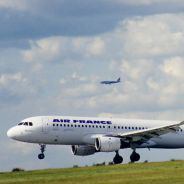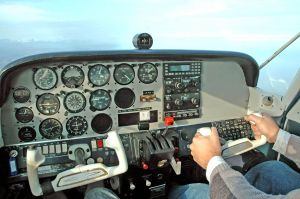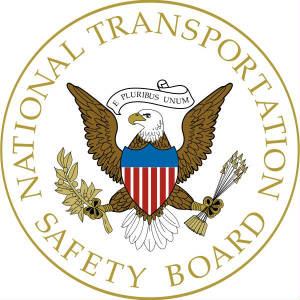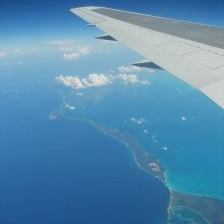 Let’s start this week with the continuing investigation into the crash of Air France Flight 447.
Let’s start this week with the continuing investigation into the crash of Air France Flight 447.
More than 50 bodies and more than 400 pieces of wreckage have been recovered, but don’t get too confident about that—some of those pieces are smaller than a paper clip with the exception of the tail section.
But the investigators are saying they are getting closer to figuring out what was it that caused the crash.
No plane ever crashes for any one reason. It’s always a combination of reasons create a scenario from which the plane cannot recover. That, of course, seems to be the case here.
My preliminary indication is that this plane did break up in flight. The tail section—which is made of composite materials—was recovered essentially intact. Had it hit the water in a crash situation, it likely would have shattered into a thousand pieces.
Read More Air France Flight 447 Coverage:
- Former NTSB Lead Investigator on Air France Flight 447
- Experts Discuss Theories on Crash of Air France Flight 447
- Air France Crash, Acapulco Shootout Top Travel News
- Found Debris NOT From Downed Jet; Air France Issues Warnings, Replaces Sensors
- Wreckage of Missing Air France Flight Identified; Cause Still Unclear
- Travel Safety & Security: Plane Crashes News Archive
The autopsies of the bodies they’ve recovered also seem to indicate one consistent finding: every single body recovered had multiple fractures in almost every part of the body, which indicates a break up in flight.
 So what do they think happened? Well, faulty speed readings and electronic failures are certainly being looked at carefully and, as a result, all U.S. airlines are replacing the speed sensors in the Airbus planes that they fly. But those sensors had not been replaced in the airplane that was in question, going between Rio and Paris.
So what do they think happened? Well, faulty speed readings and electronic failures are certainly being looked at carefully and, as a result, all U.S. airlines are replacing the speed sensors in the Airbus planes that they fly. But those sensors had not been replaced in the airplane that was in question, going between Rio and Paris.
The other interesting indication is that this may have happened before, on a Qantas Airbus A330 jet that was flying over western Australia last October. Let me just set the scene for you: The equipment that we’re talking about in these planes is susceptible to phony or faulty readings of air speed. So combine that with severe turbulence, the pilot thought he was actually flying faster than he was. He could have easily slowed the plane to ease the ride and in doing so, put it into a stall.
And, remember that most planes in those flight patterns are on autopilot. That is what happened on the Qantas flight over western Australia. Confused data caused by the flight-controlled computers mistakenly registered an imminent stall, disconnected the automatic pilot and commanded a strong downward pitch, from which the crew fortunately was able to recover, although 14 people were injured.
 Combine that with severe air turbulence in the region and you can see we have a recipe for disaster. Again, we don’t have a probable cause yet, but we are looking at those two areas.
Combine that with severe air turbulence in the region and you can see we have a recipe for disaster. Again, we don’t have a probable cause yet, but we are looking at those two areas.
Continuing air safety, of course, we’ve got to go back to that Continental crash in Buffalo early this year. The hearings on the Hill were held last week, and it’s just getting worse and worse for regional airlines and their pilot training practices.
Isn’t it wild that the pilot—who had failed multiple tests and didn’t even understand how to operate the plane in a stall situation—when he was hired by the airline, wasn’t asked for his previous history or his test results? It’s amazing.
Related links on PeterGreenberg.com:
- Regional Airlines Agree to Improve Procedures After Air Safety Summit
- Buffalo Crash Probe Raises Training, Safety Questions About Regional Flights
- The Crash of Flight 3407: Interview With Former NTSB Investigator Greg Feith
- Ice, Autopilot Examined as Causes of Fatal Buffalo Crash
- The Crash of Flight 3407: Airline Pilots Weigh In
- Continental Plane Crash Kills 50 Near Buffalo, New York
The other problem is the FAA is saying they are going to start requiring tougher rules on commuter air pilots and commuter airlines themselves. The co-pilot of this plane, who could not even afford to live in the base where she was flying, had taken two red-eye flights the night before, and jump suited into a FedEx plane just to get to her location in order to fly the plane.
 And you know what her annual salary was? $16,200. That is roughly the equivalent of a Wal-Mart cashier. You know what? I don’t want a Wal-Mart cashier flying my plane. I want somebody who is completely trained.
And you know what her annual salary was? $16,200. That is roughly the equivalent of a Wal-Mart cashier. You know what? I don’t want a Wal-Mart cashier flying my plane. I want somebody who is completely trained.
In the cockpit voice recordings of the transcripts that have been subsequently released, even she, during the descent, admitted she had no idea what she was doing up there. How about that? She had never been in an icing situation. You don’t put someone in the right seat, let alone the left seat, who hasn’t had that experience. It is just absolutely unforgivable.
And finally, Continental Airlines actually put two unaccompanied girls on the wrong planes last week. You know, the airlines have just upped the unaccompanied minor fee, in some cases to $100 per segment. That’s officially a $200 airfare increase for anybody connecting on a flight one way!
 Now for that, what are you paying for? You’re not paying for the in-flight food or the onboard entertainment. You’re paying for the safety and security of knowing that your child will at least be taken on the right plane to begin with, and will be escorted to the next connecting flight so the kid actually comes off the plane. So obviously, they’ll be reviewing some procedures there.
Now for that, what are you paying for? You’re not paying for the in-flight food or the onboard entertainment. You’re paying for the safety and security of knowing that your child will at least be taken on the right plane to begin with, and will be escorted to the next connecting flight so the kid actually comes off the plane. So obviously, they’ll be reviewing some procedures there.
Now, some good news for those people who believe that we have a buyer’s market of unprecedented proportion. The airfares are dropping so rapidly on some international routes that even with a $200 change fee, the lower airfares are going to save you about $600. This is on South American flights, on European flights, etc.
So what that means is if you find a flight that you’ve wanted to take has dropped significantly—i.e. more than the $150 or $200 it costs to change the ticket—jump on it and then make the change. Bottom line, the good news is it remains a buyer’s market and we are in the middle of the high travel season of June.
By Peter Greenberg for Peter Greenberg Worldwide Radio.
Read More Air France Flight 447 Coverage:
- Former NTSB Lead Investigator on Air France Flight 447
- Experts Discuss Theories on Crash of Air France Flight 447
- Air France Crash, Acapulco Shootout Top Travel News
- Found Debris NOT From Downed Jet; Air France Issues Warnings, Replaces Sensors
- Wreckage of Missing Air France Flight Identified; Cause Still Unclear
- Travel Safety & Security: Plane Crashes News Archive












